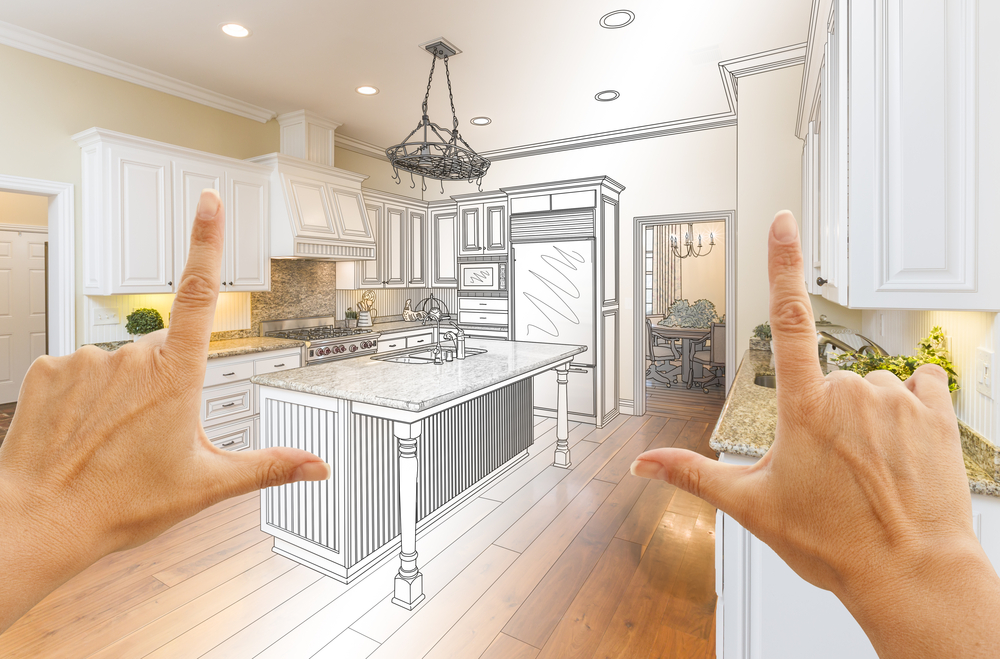
After many years of living in your home, it needs a little remodelling to make it look as good as new. Remodelling, as the word implies, is refashioning, revamping, or rebranding something that has been. Now, restoration can be done with the right experts and tools. Ultimately, you would have successfully remodelled your house to your taste and get it to look better than before. If you decide to sell your house, it would be well worth the price you put on it.
Below are a few things you should and can consider doing during the remodelling stage, which will definitely increase your home value:
1. Create a Plan:
Don’t make assumptions on a whim. Remodelling is a mission to make the house look brand new and even better than new. To achieve this, you need a well-strategized plan involving the changes you wish to make, the materials you want to use, and the time frame you are looking at. You will also need to decide on the potential contracting companies and professionals you would be working with and how you want the final result. This would help not only yourself but the professionals who would be in charge of the remodelling.
2. Do Concise Research:
Do concise and comprehensive research before finalizing your plans and moving the remodelling wagon. Your research should focus not only on the value you might be adding to your home but also the type, cost, and validity of products you will use, alongside the professional credibility of the supposed professional you’ll have onboard. If you plan to renovate the kitchen, go out and make sure that the products you plan to use are up-to-date, relevant, and of good quality. Don’t forget the prices, too. Doing this will shape your budget to a more precise figure and also help you foresee the final product of your remodelling.
3. Formulate a Budget:
With a plan comes a budget. Remodelling is better when the renovation is achieved and when your pocket isn’t empty at the end of the day. Making a budget is highly advisable to ensure that your project ends in smiles. The budget should involve the estimated cost of products, working charges, and the miscellaneous fees that would come up during the work.
4. Get the Right Professionals:
A major mistake many homeowners often make in remodelling is assuming they can do everything independently without professional help. When it comes to improving a home, there are a lot of things that you need—if not professional input, then at least professional advice and point of view. Work with the best professionals in the market when aiming to remodel your house. They are in the best position to buy what you need and for the technical work. Contact contractors and subcontractors specialising in various aspects, from tiles to home appliances to roofing, woodwork, and siding. Always remember that professional input ensures that the work is done well and that the final result is much better than your expectations.
5. Focus on the Areas You Wish to Remodel:
One sure thing is that the entire house doesn’t need to be repaired to raise the value of your home. Some specific regions are just the perfect area to be remodelled, and that will benefit you and anyone who will be taking ownership of the house later. Areas such as the kitchen, the sitting room, the bathroom, the flooring, and the windows are paramount and have a more significant impact on remodelling and the value of a home. What is a home without a functional kitchen a proper bathroom, or even a good door? As such, your focus should be making the best out of these areas by investing in the latest products. You also need to pay attention to creating more storage places in the case of kitchens, repairing the appliances and fixtures in the bathroom, and, if possible, changing the floor tiles or boards with more polished wood or more calm tiles, and so on.
6. Remodelling is Repainting:
Never forget that repainting is also part of the renovation. As you choose the perfect cabinet type for the kitchen, consider the ideal colour to go with the kitchen, which would require something more homely. The bedrooms would need a color that is calmer and more relaxing, and the rest of the house, too, including the outer part—all would require a particular color scheme or type. During the entire adaptation, don’t forget that repainting the house is as important as remodelling it, and if you are the type who prefers wallpapers, then choose those that would give your home a brand-new, rebranded look.
7. Final Product and Blueprint:
When remodelling, a lot of people discover that their final product looks different from their designs. This happens because they do not follow up with the initial plans, or they do a routine follow-up with the contractors and subcontractors in charge of the work. This situation can eventually lead to unhappy homeowners whose dream of remodelling didn’t go as planned. To avoid such cases, ensure that you follow up with the work and monitor the activities from the purchase of products to the fitting and installation. Yes, you are dealing with professionals, but only you have the perfect picture of what you desire to see at the end of your remodelling.
8. Always Make Room for Changes:
The fact you are remodelling is already a change, so never rule out the possibility of changes in your already ongoing change, either from you or from those you have put in charge of the entire procedure. The difference could come from a last-minute material change, such as the number of cabinets you wish to fit in the kitchen or the type of tiles you had in mind. All these could be a result of new trends surfacing in the course of the remodelling or a change in taste or perspective. As much as you wish to make the best of the process, a little last-minute change never hurts. The best thing to do is not to fear the change; instead, make room for such changes.
9. Follow the Right Legal Procedures:
Yes, the renovation also has its legal sidelines, and if not followed to the letter, it could lead to big problems for yourself or even for the person who wishes to get your beautifully remodelled home at the end of the day. From the neighbourhood permit or the local council’s permit to following regulations on remodelling and home construction, all are very important and should be treated as seriously as the remodelling itself. Ensure that all legal procedures are in order and all taxes or documents are signed to ensure a smooth remodelling activity and a better post-remodelling experience.
10. Don’t Rush It:
Yes, even when time-conscious, be patient with the remodelling process. The reason is that, in the process of remodelling, so many changes that would be highly beneficial to you and your remodelling plan can come in, and being in haste would lead you to bypass such changes. So, take your time with the decision-making, explore your options, and let the professionals involved in the work take their time to make it right. No good comes out of an express delivery, particularly regarding housing—mistakes are bound to happen that way. Therefore, ensure that even when you have an estimated period, you take things easy and enjoy the process as it unfolds to obtain the best final result.
11. It’s Remodelling, Not a New Space:
As you remodel, ensure the final result doesn’t make you a stranger to your house. Since you want to change your home to give it a boosted look, it doesn’t mean you should completely change everything to the point where you can’t even tell which is which anymore. Remodelling is based on what was before, making it appear new rather than old and worn out. It is not entirely discarding the former but making it better. Keep that in mind when remodelling so you don’t feel like a stranger in your home after renovation.
Conclusion
There is much more to remodelling than simply changing appliances or relocating furniture. There’s so much to do, from research to planning, creating a budget, selecting the materials and the right colours for each room, coming up with a time frame, working with professionals, and even complying with legal procedures. But one thing is for sure: once done, you will be staring at a beautifully remade home and a house whose value has shot up in the domicile market.
Ref: 3678.32514




 POSTED BY
POSTED BY 

